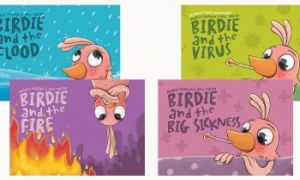The following article provides practical hacks to make your life as an Educator easier and more enjoyable. Practical Hacks include Organization and Time Management, Engaging Activities, Classroom Management, Documentation and Assessmenr, Personal Wellbeing and more.
Pratical Hacks
Organization and Time Management
-
Weekly Planner: Use a weekly planner to jot down activities, lessons, and important dates. It helps keep everything organized and on track.
-
Prep Bins: Have bins or baskets for each day of the week with materials and supplies ready to go. This saves time during busy mornings.
-
Digital Tools: Utilize digital planning tools and apps like Google Calendar or Evernote to keep track of tasks and deadlines.
Engaging Activities
-
Thematic Units: Plan thematic units that incorporate different subjects like science, literacy, and art. This keeps learning cohesive and exciting.
-
Sensory Play: Create sensory bins with materials like rice, pasta, or water beads. Add scoops, funnels, and containers for hands-on exploration.
-
Interactive Storytelling: Use props, puppets, and interactive elements to make storytime more engaging.
Classroom Management
-
Visual Schedules: Use visual schedules with pictures and words to help children understand the daily routine.
-
Transition Songs: Incorporate songs or rhymes for transitions between activities. It makes the process smoother and fun.
-
Calm Down Corner: Set up a calm down corner with soft toys, pillows, and calming activities for children to use when they need a break.
Documentation and Assessment
-
Observation Templates: Create templates for observations and assessments to streamline documentation.
-
Digital Portfolios: Use apps like Seesaw or Storypark to maintain digital portfolios of children's progress. It saves time and keeps everything organized.
-
Regular Updates: Set aside specific times during the week for updating records and documentation.
Inclusion and Support
-
Visual Supports: Use visual supports like picture cards and social stories to help children with communication and understanding.
-
Buddy System: Pair children up with buddies to promote inclusion and peer support.
-
Professional Networks: Connect with inclusion support services and specialists for additional guidance and resources.
Personal Well-being
-
Work-Life Balance: Maintain a healthy work-life balance. Take time for self-care and relaxation.
-
Set Boundaries: Establish clear boundaries between work and personal life. Avoid taking work home whenever possible.
-
Seek Support: Don't hesitate to seek support from colleagues, mentors, or professional counseling services if needed.
Additional Practical Hacks
-
Resource Swaps: Engage in resource swaps with other teachers to save money and diversify materials.
-
Reuse and Recycle: Get creative with recycled materials for arts and crafts projects.
-
Emergency Kit: Keep an emergency kit with essentials like band-aids, tissues, and extra supplies for unexpected situations.
Implementing these hacks can make your teaching experience smoother and more enjoyable. If you have any specific areas you'd like more tips on, feel free to ask!
Organization and Time Management
Weekly Planning
-
Weekly Planner: Use a planner or a digital tool to jot down activities, lessons, and important dates. Set aside time each week to plan out the following week.
-
Prep Bins: Create bins or baskets for each day of the week with materials and supplies ready to go. This saves time during busy mornings and ensures you're prepared.
Daily Routines
-
Visual Timetable: Create a visual timetable with pictures and words to help children understand the daily schedule. It helps both you and the children stay on track.
-
Routine Charts: Use routine charts to establish consistent routines. This reduces the stress of transitions and helps maintain order.
Time Management
-
Timers: Use timers to keep track of activity durations and transitions. It can help you stay on schedule and make the day run more smoothly.
-
Prioritize Tasks: Make a list of tasks and prioritize them. Focus on the most important tasks first and tackle smaller tasks during downtime.
Digital Tools
-
Google Calendar: Use Google Calendar to keep track of important dates, meetings, and deadlines. Set reminders for key events.
-
Evernote: Use Evernote to organize notes, lesson plans, and to-do lists. It’s a great way to keep everything in one place and easily accessible.
Classroom Organization
-
Label Everything: Label shelves, bins, and storage areas to keep everything organized and easy to find. It also helps children learn where things belong.
-
Declutter Regularly: Set aside time to declutter and organize your classroom regularly. It prevents chaos and ensures a tidy environment.
Efficient Documentation
-
Observation Templates: Create templates for observations and assessments to streamline documentation.
-
Digital Portfolios: Use apps like Seesaw or Storypark to maintain digital portfolios of children's progress. It saves time and keeps everything organized.
Personal Well-being
-
Set Boundaries: Establish clear boundaries between work and personal life. Avoid taking work home whenever possible.
-
Self-Care: Prioritize self-care activities like exercise, hobbies, and relaxation to maintain your well-being.
Additional Tips
-
Resource Swaps: Engage in resource swaps with other teachers to save time and diversify materials.
-
Emergency Kit: Keep an emergency kit with essentials like band-aids, tissues, and extra supplies for unexpected situations.
Implementing these strategies can help you stay organized and manage your time effectively, making your teaching experience smoother and more enjoyable.
Engaging Activities
Thematic Units
-
Seasonal Themes: Plan activities based on the current season. For example, in autumn, you could have leaf rubbings, pumpkin painting, and fall-themed storytime.
-
Animal Adventures: Create a unit focused on different animals. Include animal crafts, songs, and books about various animals.
Sensory Play
-
Sensory Bins: Fill bins with materials like sand, rice, pasta, or water beads. Add tools like scoops, funnels, and containers for hands-on exploration.
-
Play Dough Station: Provide play dough and various tools for molding, cutting, and shaping. Include natural items like leaves and flowers for added creativity.
Interactive Storytelling
-
Story Props: Use puppets, props, and interactive elements to make storytime more engaging. Encourage children to participate by acting out parts of the story.
-
Story Sequencing: After reading a story, have children sequence the events using picture cards. It helps with comprehension and memory.
Art and Craft Activities
-
Collage Creation: Provide a variety of materials like paper, fabric, buttons, and natural items for children to create their own collages.
-
Nature Art: Collect leaves, sticks, and flowers from outside and use them to create beautiful nature-inspired art projects.
Science and Nature Exploration
-
Mini Garden: Create a small garden in the classroom where children can plant seeds, water the plants, and observe their growth.
-
Bug Investigation: Go on a bug hunt outside and then examine the bugs using magnifying glasses. Discuss their characteristics and habitats.
Music and Movement
-
Dance Party: Have a dance party with fun, upbeat music. Encourage children to move their bodies and express themselves through dance.
-
Musical Instruments: Provide various musical instruments like drums, maracas, and tambourines. Let children experiment with making different sounds.
Construction and Building
-
Building Challenges: Provide building blocks, LEGO, and other construction materials. Challenge children to build specific structures like bridges or towers.
-
Loose Parts Play: Offer a variety of loose parts like bottle caps, fabric scraps, and wooden blocks for open-ended building and creativity.
Group Activities
-
Collaborative Art: Set up a large piece of paper or canvas and let children work together to create a collaborative art piece.
-
Cooking Projects: Involve children in simple cooking projects like making fruit salad or baking cookies. It's a fun way to learn about measurements and following instructions.
Outdoor Play
-
Obstacle Course: Set up an obstacle course outside with cones, hoops, and tunnels. It helps develop gross motor skills and coordination.
-
Nature Scavenger Hunt: Create a scavenger hunt list with items to find in nature, like leaves, rocks, and flowers. It's a great way to explore the outdoors.
Classroom Management
Establish Clear Expectations
-
Set Rules: Establish simple, clear rules that children can understand. Use positive language, e.g., "Use kind words" instead of "Don't shout."
-
Visual Reminders: Display rules and expectations visually with pictures and words so that children can easily see and remember them.
-
Consistent Routines: Establish and maintain consistent daily routines. Children thrive on predictability and knowing what to expect.
Build Relationships
-
Positive Interactions: Focus on positive interactions with children. Praise good behavior and efforts to reinforce positive actions.
-
Get to Know Them: Take time to get to know each child individually. Understand their interests, strengths, and needs.
-
Model Behavior: Demonstrate the behavior you expect from children. Model kindness, patience, and respect.
Manage Transitions
-
Transition Cues: Use visual and auditory cues, such as a bell or a song, to signal transitions between activities.
-
Engaging Activities: Plan engaging and quick activities to keep children occupied during transitions, such as singing a song or playing a short game.
-
Prepare Ahead: Prepare materials and set up activities in advance to minimize waiting time during transitions.
Positive Reinforcement
-
Reward Systems: Implement a reward system, such as a sticker chart or a "classroom treasure box," to motivate and reward positive behavior.
-
Immediate Praise: Offer immediate praise and positive reinforcement when children display good behavior or effort.
-
Encouragement: Encourage effort and progress, not just results. Acknowledge children's hard work and perseverance.
Addressing Misbehavior
-
Calm Approach: Address misbehavior calmly and respectfully. Explain why the behavior is unacceptable and offer alternatives.
-
Natural Consequences: Allow children to experience natural consequences for their actions when appropriate. It helps them understand the impact of their behavior.
-
Reflection Time: Create a "calm-down corner" where children can take a break and reflect on their behavior before rejoining the group.
Engaging Learning Environment
-
Interactive Centers: Set up interactive learning centers that cater to different interests and developmental stages. Rotate activities regularly to keep them fresh and engaging.
-
Organized Space: Keep the classroom organized and clutter-free. Arrange materials and resources in an accessible and child-friendly manner.
-
Flexible Seating: Provide flexible seating options, such as cushions, bean bags, and floor mats, to create a comfortable and inviting learning environment.
Communication with Parents
-
Regular Updates: Keep parents informed about their child's progress and classroom activities through regular newsletters, emails, or a classroom blog.
-
Open Communication: Maintain open lines of communication with parents. Encourage them to share concerns and work together to support their child's learning and development.
-
Parent Involvement: Involve parents in classroom activities and events. Encourage them to volunteer or participate in special projects.
By implementing these strategies, you can create a well-managed classroom that promotes a positive and engaging learning environment for your preschoolers.
Documentation and Assessment
Documentation
-
Observation Templates: Create standardized templates for observations. This can help you capture consistent information across different children and activities.
-
Digital Portfolios: Use digital platforms like Seesaw, Storypark, or Educa to maintain digital portfolios of children's work and progress. It saves time and keeps everything organized in one place.
-
Learning Stories: Document children's learning experiences through learning stories. These narratives capture significant moments of learning and development.
-
Photos and Videos: Use photos and videos to document children's activities and milestones. Visual documentation can be very powerful and engaging for parents.
-
Daily Journals: Keep a daily journal to note down significant events, observations, and reflections. This can help you track children's progress over time.
-
Parent Communication: Regularly update parents with information about their child's learning and development. Use newsletters, emails, or a classroom blog to keep them informed.
-
Display Boards: Use display boards in the classroom to showcase children's work and learning journeys. It helps create a sense of pride and ownership among children.
Assessment
-
Developmental Checklists: Use developmental checklists to track children's progress across various domains, such as physical, cognitive, social, and emotional development.
-
Anecdotal Records: Maintain anecdotal records to document specific incidents or behaviors that provide insight into a child's development.
-
Running Records: Use running records to capture detailed, objective observations of children's activities and interactions over a set period.
-
Child Profiles: Create individual child profiles that include assessments, observations, and documentation of each child's learning journey.
-
Goal Setting: Set specific, measurable, achievable, relevant, and time-bound (SMART) goals for each child based on your assessments.
-
Assessment Tools: Utilize various assessment tools, such as checklists, rating scales, and rubrics, to evaluate children's progress and development.
-
Parent Conferences: Schedule regular parent-teacher conferences to discuss children's progress, share documentation, and set future goals.
Streamlining Processes
-
Regular Schedule: Set a regular schedule for documentation and assessment tasks. Dedicate specific times each week to complete these tasks.
-
Collaborate with Colleagues: Share insights and documentation practices with colleagues to learn from each other and improve your methods.
-
Use Technology: Leverage technology to simplify and streamline documentation and assessment processes. Explore apps and software that can assist you.
-
Stay Organized: Keep your documentation and assessment materials organized and easily accessible. Use binders, folders, or digital systems to manage everything efficiently.
Personal Wellbeing
As an Early Childhood Teacher, taking care of your personal well-being is essential for maintaining your energy, passion, and effectiveness in the classroom. Here are some practical tips to help you prioritize your well-being:
Set Boundaries
-
Work-Life Balance: Establish clear boundaries between work and personal life. Avoid taking work home whenever possible and create a routine that allows you to unwind after school hours.
-
Time for Yourself: Schedule regular time for activities that you enjoy and that help you relax, such as reading, hobbies, or spending time with loved ones.
Self-Care Practices
-
Exercise: Incorporate regular physical activity into your routine. It can be as simple as taking a walk, practicing yoga, or joining a fitness class.
-
Healthy Eating: Maintain a balanced diet with nutritious meals and snacks. Avoid relying on caffeine and sugary foods for energy.
-
Sleep: Prioritize getting enough sleep each night. Establish a bedtime routine that helps you relax and prepares you for a restful night's sleep.
Mental Health
-
Mindfulness and Meditation: Practice mindfulness or meditation to help reduce stress and improve your focus and emotional well-being.
-
Stress Management: Identify your stressors and develop strategies to manage them, such as deep breathing exercises, journaling, or talking to a trusted friend or therapist.
-
Positive Affirmations: Use positive affirmations to boost your self-confidence and maintain a positive mindset.
Professional Support
-
Mentorship: Seek out mentors or colleagues with whom you can share your experiences and seek advice.
-
Professional Development: Engage in professional development opportunities to enhance your skills and keep your passion for teaching alive.
-
Workshops and Conferences: Attend workshops, conferences, and networking events to connect with other educators and gain new insights.
Manage Workload
-
Delegate Tasks: Don’t hesitate to delegate tasks and seek support from colleagues when needed.
-
Prioritize Tasks: Focus on the most important tasks and let go of non-essential ones. Use to-do lists to stay organized and manage your time effectively.
-
Efficient Planning: Plan your lessons and activities in advance to reduce last-minute stress and ensure you have everything you need.
Social Connections
-
Build Relationships: Foster positive relationships with colleagues, friends, and family. Having a strong support network can provide emotional support and reduce feelings of isolation.
-
Engage in Social Activities: Participate in social activities and gatherings to stay connected and build a sense of community.
Relaxation and Leisure
-
Hobbies: Pursue hobbies and interests outside of work to bring joy and relaxation into your life.
-
Travel and Explore: Take time to travel and explore new places, even if it's just a weekend getaway. Experiencing new environments can be refreshing and rejuvenating.
-
Unplug: Take breaks from technology and social media to give your mind a rest and focus on the present moment.
By prioritizing your personal well-being, you'll be better equipped to handle the demands of your role and maintain a positive and enthusiastic approach to teaching. Remember, taking care of yourself is not a luxury—it's a necessity.
Further Reading
Tips And Hacks For First Time ECT Graduate
Handling Complaints Effectively In Early Childhood Services
How to Improve Team Meetings In Early Childhood Settings
Handling Conflicts
How to Boost Team Morale In Early Childhood Settings
Managing Stressful Moments In Early Childhood Services







 As an Educator in Australia, your pay rate falls under the Children’s Services Award 2010. This award states the minimum amount that an employer can
As an Educator in Australia, your pay rate falls under the Children’s Services Award 2010. This award states the minimum amount that an employer can When working as a qualified Early Childhood Teacher (with a university degree) within a service, your rate of pay will come from the Educational Services
When working as a qualified Early Childhood Teacher (with a university degree) within a service, your rate of pay will come from the Educational Services When working as a Diploma Qualified Educator your pay rate is from the Children's Services Award 2010. This Award states your minimum rate of pay
When working as a Diploma Qualified Educator your pay rate is from the Children's Services Award 2010. This Award states your minimum rate of pay When working as a Cert 3 Qualified Educator, your pay rate is from the Children's Services Award 2010. This Award states your minimum rate of
When working as a Cert 3 Qualified Educator, your pay rate is from the Children's Services Award 2010. This Award states your minimum rate of Educational Leaders play a crucial role in their early childhood service by ensuring that the educational program aligns with best practices and supports the holistic
Educational Leaders play a crucial role in their early childhood service by ensuring that the educational program aligns with best practices and supports the holistic In early childhood education and care, ratios are more than a technicality—they are a frontline safeguard. Every child deserves responsive supervision, emotional connection, and developmental
In early childhood education and care, ratios are more than a technicality—they are a frontline safeguard. Every child deserves responsive supervision, emotional connection, and developmental With the new national child safety reforms kicking in on 1 September 2025, early childhood services like yours have a real opportunity to lead the
With the new national child safety reforms kicking in on 1 September 2025, early childhood services like yours have a real opportunity to lead the Here’s a comprehensive Mobile Phone and Smart Watch Policy tailored for early childhood education and care (ECEC) services in Australia, aligned with the latest 2025
Here’s a comprehensive Mobile Phone and Smart Watch Policy tailored for early childhood education and care (ECEC) services in Australia, aligned with the latest 2025 The Sea of Fish Challenge is a national initiative that invites children, educators, families, and communities to create and display fish artworks as a symbol
The Sea of Fish Challenge is a national initiative that invites children, educators, families, and communities to create and display fish artworks as a symbol Across the early childhood education and care sector, educators are sounding the alarm: current staffing ratios are insufficient to deliver safe, meaningful, and developmentally appropriate
Across the early childhood education and care sector, educators are sounding the alarm: current staffing ratios are insufficient to deliver safe, meaningful, and developmentally appropriate


